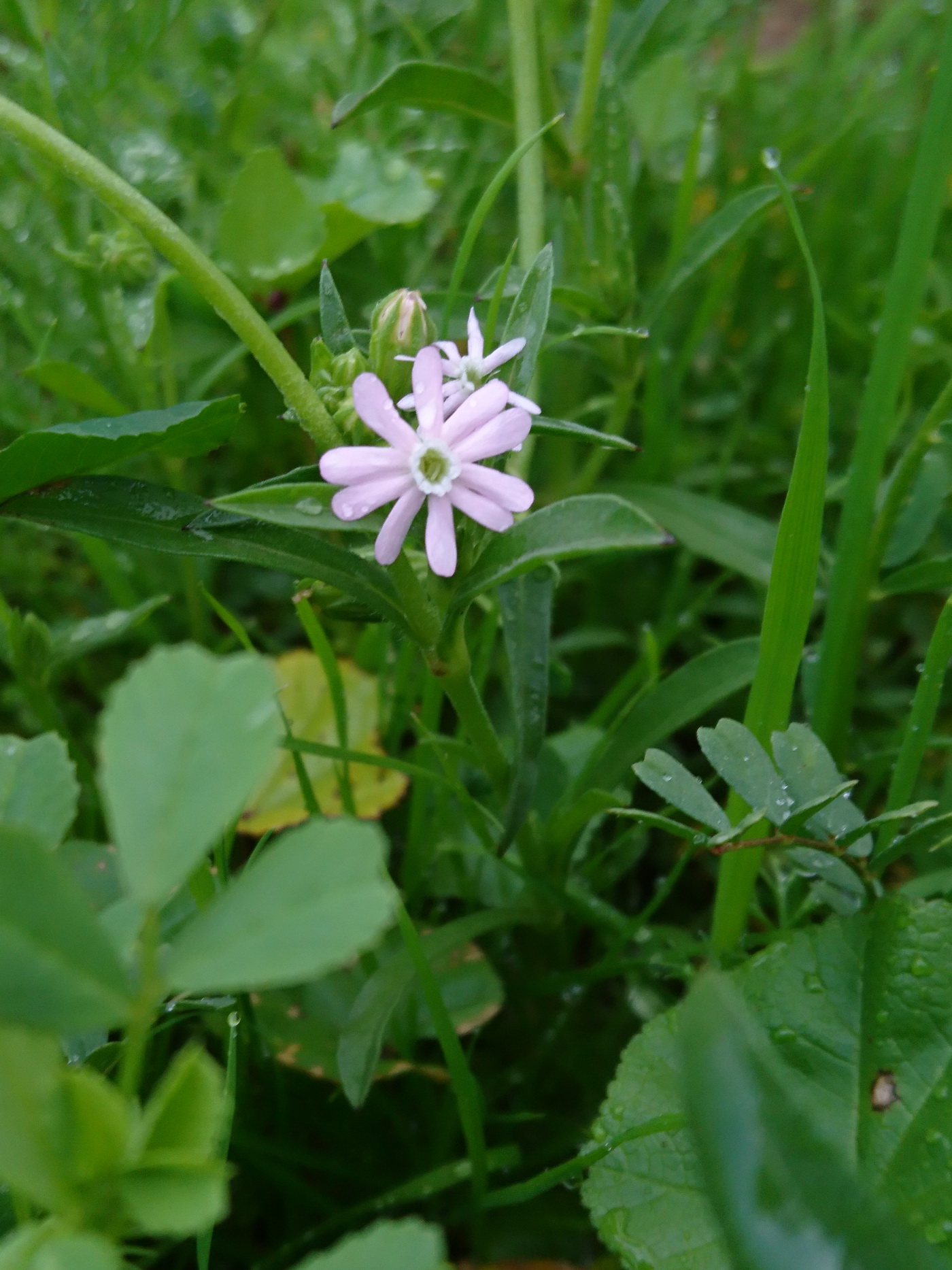Night-flowering Catchfly on:
[Wikipedia]
[Google]
[Amazon]
''Silene noctiflora'' is a species of flowering plant in the family
It grows in fields and in other disturbed habitat.
 The night-flowering catchfly is an annual herb producing a hairy, glandular stem up to about 75 or 80 centimeters in maximum height. It is sticky in texture. The hairy, widely lance-shaped leaves grow in opposite pairs and are up to 14 centimeters long and 5 wide, the largest ones located low on the stem. The flowers are nocturnal,
The night-flowering catchfly is an annual herb producing a hairy, glandular stem up to about 75 or 80 centimeters in maximum height. It is sticky in texture. The hairy, widely lance-shaped leaves grow in opposite pairs and are up to 14 centimeters long and 5 wide, the largest ones located low on the stem. The flowers are nocturnal,Flora of North America
/ref> and occur in an open cyme of up to fifteen blooms, each borne on an erect pedicel. The flower is encapsulated in a hairy calyx of fused
/ref>NCBI sequenced plant mitochondrial genomes
/ref>
Jepson Manual TreatmentUSDA Plants ProfileWashington Burke MuseumPhoto gallery
{{Taxonbar, from=Q159022 noctiflora Plants described in 1753 Taxa named by Carl Linnaeus Night-blooming plants
Caryophyllaceae
Caryophyllaceae, commonly called the pink family or carnation family, is a family (biology), family of flowering plants. It is included in the dicotyledon order Caryophyllales in the APG III system, alongside 33 other families, including Amaranth ...
known by the common names night-flowering catchfly, nightflowering silene and clammy cockle. It is native to Eurasia, but it is known on other continents as an introduced species
An introduced species, alien species, exotic species, adventive species, immigrant species, foreign species, non-indigenous species, or non-native species is a species living outside its native distributional range, but which has arrived ther ...
and sometimes a weed
A weed is a plant considered undesirable in a particular situation, growing where it conflicts with human preferences, needs, or goals.Harlan, J. R., & deWet, J. M. (1965). Some thoughts about weeds. ''Economic botany'', ''19''(1), 16-24. Pla ...
. In North America, it is a common weed of grain crops in the Canadian prairie provinces and in much of the United States.North American Plant Protection OrganizationIt grows in fields and in other disturbed habitat.
Description
 The night-flowering catchfly is an annual herb producing a hairy, glandular stem up to about 75 or 80 centimeters in maximum height. It is sticky in texture. The hairy, widely lance-shaped leaves grow in opposite pairs and are up to 14 centimeters long and 5 wide, the largest ones located low on the stem. The flowers are nocturnal,
The night-flowering catchfly is an annual herb producing a hairy, glandular stem up to about 75 or 80 centimeters in maximum height. It is sticky in texture. The hairy, widely lance-shaped leaves grow in opposite pairs and are up to 14 centimeters long and 5 wide, the largest ones located low on the stem. The flowers are nocturnal,/ref> and occur in an open cyme of up to fifteen blooms, each borne on an erect pedicel. The flower is encapsulated in a hairy calyx of fused
sepal
A sepal () is a part of the flower of angiosperms (flowering plants). Usually green, sepals typically function as protection for the flower in bud, and often as support for the petals when in bloom., p. 106
Etymology
The term ''sepalum'' ...
s lined with a netlike pattern of veining. The five petals are white to pink and each has two lobes at the tip. They measure up to 2.5 centimeters wide when fully open. The fruit is a yellowish-brown capsule with six chambers which splits open to release the seeds.
Ecology
As night falls the flowers of the night-flowering catchfly open and release a strong fragrance which attracts night-flying moths which feed on the copious nectar and pollinate the plant.Research
Besides being a competitive weed, the night-flowering catchfly is host to some plant pathogens that can spread to crop plants, including tobacco streak virus and Lychnis ringspot virus. The mitochondrial genome of this species has been sequenced. It is 6.7 megabases long, which is very large compared to some other ''Silene'' species such as Silene vulgaris (0.43 megabases), is one of the largest sequenced plant mitochondrial genomes (the largest is Silene conica at 11.3 megabases), and consists of 59 smallchromosomes
A chromosome is a package of DNA containing part or all of the genetic material of an organism. In most chromosomes, the very long thin DNA fibers are coated with nucleosome-forming packaging proteins; in eukaryotic cells, the most importa ...
.Mitochondrial genome study/ref>NCBI sequenced plant mitochondrial genomes
/ref>
References
External links
Jepson Manual Treatment
{{Taxonbar, from=Q159022 noctiflora Plants described in 1753 Taxa named by Carl Linnaeus Night-blooming plants